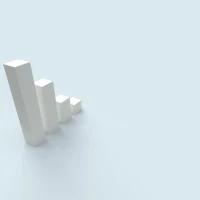Embarking on the journey of mastering graphing techniques transcends mere academic pursuit; it equips you with a razor-sharp analytical mindset capable of tackling hordes of problems, be they zombie apocalypse scenarios or intricate mathematical challenges. Graphing lines is not just a fundamental aspect of mathematics, it is the art of visualizing complex relationships and crafting solutions that can extend well beyond the textbooks. In this in-depth exploration, we sink our teeth into the enigmatic world of graphing, discovering secrets that both educators and enthusiasts will find indispensable.
As the undead rise in popular culture, we forge an unconventional alliance; graphing lines becomes our weapon of choice in carving a path through a fictional zombie onslaught. This article is poised to not only educate but entertain, revealing how graphing lines can be as exhilarating as vanquishing legions of the walking dead.
Embarking on a Graphical Adventure
The Core of Graphing Lines
Graphing is a critical skill, a visual language for presenting relationships between varying quantities. It is a bridge that connects abstract concepts to tangible forms, aiding in both comprehension and application solving systems of equations by graphing worksheet mathematical theories. Whether for high school algebra or advanced collegiate topics, the ability to graph lines is a keystone of quantitative reasoning.
Understanding the Axes
Every graph has an x-axis and a y-axis, representing the horizontal and vertical planes. Where these axes intersect, we find the origin – the baseline from which we measure all other points on this two-dimensional plane. This coordinate system forms the bedrock of graphing, where each point is defined by an x (horizontal) and a y (vertical) value, typically expressed as (x, y).
- X-axis (Horizontal): Typically denotes the independent variable
- Y-axis (Vertical): Represents the dependent variable, often determined by the x-value
Plotting Points and Lines
Graphing lines involves plotting points that satisfy a particular equation and then connecting these points to reveal a straight line – a visual representation of linear relationships.
- The Slope-Intercept Form: The equation y = mx + b, where m represents the line’s slope, and b the y-intercept, is the most used format for graphing straight lines.
Slope: The Zombie’s Dilemma
The concept of slope is essential, as it measures the steepness of a line. Picture it as a hill: the steeper the hill, the more difficult it is for the zombies to climb. In Odd cycle graph algorithmsing terms, a higher slope (m) means a steeper angle.
The Thrilling Intersection of Lines
Lines on a 1 inch graph paper printable can intersect, representing solutions or collaborative points between two different equations. These intersections are strategic points, just like choke points during a zombie siege, where decisive encounters occur.
Graphing Lines: Step-by-Step Strategies
Here’s a methodical approach to supply and demand graph makering lines that will make you feel like a strategist planning a defense against an advancing zombie horde.
Step 1: Identify the Equation
The first step in graph of functionsing a line is to identify the format of the equation. For instance, y = 2x + 3 offers a clear view of the slope (2) and the y-intercept (3).
Step 2: Plot the Y-Intercept
Begin by marking the y-intercept on the conductance graph community detection python. This acts as a starting point, much like establishing a safe zone in a post-apocalyptic world.
Step 3: Use the Slope to Find Other Points
From the y-intercept, use the slope to determine the next points. A slope of 2 means that for every step right (positive x-direction), you climb two steps up (positive y-direction).
Step 4: Draw the Line
Once you have a few points plotted, draw a line through them, extending it in both directions. This line represents all the points (x, y) that satisfy your initial equation.
Tactical Comparisons: Lines and Zombies
Let’s draw some parallels between graphing lines and strategizing against zombies. We’ll use a comparison chart to highlight the similarities.
Strategy Comparison Chart
| Graphing Lines Strategy | Zombie Defense Strategy | Description/Outcome |
|---|---|---|
| Identify the Equation | Assess the Threat | Establish the scenario; understand the rules. |
| Plot the Y-Intercept | Establish a Safe Zone | A known point to start from; a secure base. |
| Use the Slope | Plan Attack/Defense Routes | Determine paths of engagement; position for advantage. |
| Draw the Line | Set Perimeters | Create boundaries; connect strategic points. |
Advanced Graphing Concepts for Survivors
As with any survival scenario, there’s always a need to up the game. Advanced graphing topics like systems of equations, nonlinear functions, and inequalities add layers of complexity, much like evolving zombie threats.
Systems of Equations: Alliances and Strategies
In a world overrun by the undead, forming alliances and developing complex strategies is key to survival. Similarly, systems of equations involve finding solutions for multiple lines—discovering where they work together, like allies in the fight for survival.
Nonlinear Functions: Adapting to New Threats
While graphing lines is linear, real-world challenges often are not. Nonlinear functions, such as parabolas, represent more complicated relationships. In zombie terms, think of this as adapting tactics to different types of zombies.
Graphing Tools and Technology
Not all heroes in a zombie apocalypse rely on brute force; some rely on cunning and technology. We have various graphing tools at our disposal:
- Graphing Calculators: Portable and powerful, allowing for rapid plotting and analysis.
- Computer Algebra Systems (CAS): Provide dynamic graphing capabilities and an array of analytical tools.
- Online Graphing Utilities: Accessible tools for plotting and sharing graphs.
Staying Sharp: Practice Problems and Challenges
Repetition is the mother of all skills, whether fending off zombies or mastering graphs. Practice problems are to students what training is to zombie survivors.
- Linear Graph Practice: Start with extra simple equations and incrementally tackle more complex ones.
- Intersecting Lines Puzzles: Challenge yourself with systems of equations, finding where lines intersect.
- Real-World Applications: Apply graphing skills to data analysis, economics, physics, and even game strategy.
Conclusion: The Art of Graphing as a Lifeline
Graphing lines may seem innocuous at first glance, but it’s a formidable tool—an intellectual armament against life’s challenges, with surprising parallels to conquering mythical undead adversaries. In mastering graphing, you engender a mindset fit for breaking down barriers, analyzing scenarios, and crafting strategic blueprints.
Whether you’re a student looking to ace your next math exam, a curious mind exploring mathematical landscapes, or a fictional zombie-warrior, the power of graphing is a powerful ally. Embrace it, nurture it, and let it transform you into the ultimate strategic thinker, ready to plot, analyze, and vanquish any obstacle in your path.










